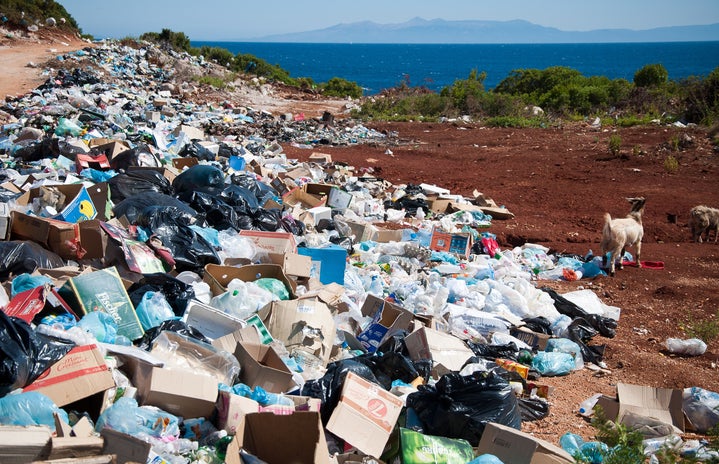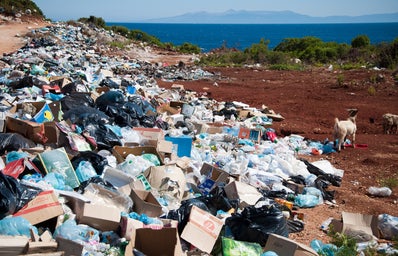Walking through the streets of Cantera, Barrio Obrero or Las Monjas can smell like death sometimes, look like a landfill, or feel as if you were in a swamp, or maybe even sound like hundreds of flies are haunting you. But these are not just similes or metaphors. No, this is the reality that thousands of residents confront on a daily basis within the eight communities that surround the Caño Martín Peña (CMP or El Caño), a water channel located between Hato Rey and Santurce in San Juan, Puerto Rico. El Caño has been, and still is, a victim of multiple unkept governmental promises, mistreatments, and dangerous levels of contamination that not only harm the marine and terrestrial life, but also its human inhabitants.
- What is El Caño?
-
El Caño Martín Peña is a waterway of 3.75 miles which is part of the San Juan bay estuaryーone of the most important estuaries, according to the Environmental Protection Agency (EPA), because “the San Juan Bay Estuary Program is the only member of EPA’s National Estuary Program located in a tropical region.”
By the 1920s, it was still a mangrove. No one lived there while the waterway served merely as a tool of transportation and for the economy’s well-being. But, because of the changes that the Island experienced due to the massive industrialization era, the Great Depression’s impact that brought both PRERA and the PRA programs, and the need to work, there was a huge migration within the Island from the countryside to the metropolitan area. Throughout the decades, people started building and establishing the communities we know today as part of Santurce and Hato Rey: Barrio Obrero, Barrio Obrero Marina, Israel-Bitumul, Buena Vista Santurce, Buena Vista Hato Rey, Península de Cantera, Las Monjas, and Parada 27. These eight communities conform the G8, a topic we’ll get back to soon.
So why is this waterway so important and what impact does its transformation have on the residents and the environment?
There’s an enormous environmental problem concerning El Caño. The waterway is contaminated with substantial amounts of solid scraps that don’t allow the water to flow. This obstruction causes the accumulation of bacteria and waste waters, as well as the death of the animals that inhabit the area. The documentary Agua Mala resumes El Caño’s situation really well.
When it rains, the communities get flooded, and the residents are exposed to diseases due to the infections they might get from the bacteria, as they do not have other ways to walk through their communities.
- How our most important life resource could be our death note
-
Throughout the years, the many status and rehabilitation projects for El Caño have been discussed within public discourse. There have been multiple efforts to keep El Caño alive by preserving the residences of the people living there from more than 50, 60, 70 years ago, but the government’s response has been quite slow. In the meantime, contamination at El Caño increases and affects all of the life surrounding it.
We might not think about this daily and probably take for granted how easy it is for us to drink a clean glass of water, take a shower, or wash our clothes. We may even not be thankful for it because we see it as normal, but clean, fresh water is actually less accessible than we think. The lack of sewage systems and abundance of chemical spillage, solid scraps, and dead animals are contaminating our water spaces as a consequence of continuous and harmful fishing practices.
The Natural Resources Defense Council (NRDC) explains that “water pollution occurs when harmful substances—often chemicals or microorganisms—contaminate a stream, river, lake, ocean, aquifer, or other body of water, degrading water quality and rendering it toxic to humans or the environment.” Water is described as a “universal solvent” because of its ability to mix with any element that makes contact with it.
In terms of El Caño, it is a surface-level body of water. Its visibility makes it more susceptible to receive liquid and solid elements. It isn’t valued as a natural resource, if not as a garbage dump that many think of when disposing of items with a thought such as “well, I’m just gonna throw this can, it won’t affect me in any way.” But then there comes another can, and another, and another from others with the exact same thought. But it doesn’t stop there—what about industries or companies that may secretly and illegally throw away residues in the middle of the night?
Another problem that El Caño faces is the lack of a sewage system. Just imagine your house filled up with dirty, smelly water that carries rats or cockroaches, used water from toilets, or oil and grease from fabrics. This is what these communities live when it rains, all because they don’t have a sewage system! Now, people suffer from skin and respiratory illness, and it’s no surprise. The World Health Organization sustains that 80% of diseases are waterborne, therefore, these citizens are exposed to all kinds of harmful bacteria. You can read more about this topic on the UK Water Pollution website about the dangers of water pollution.
Can you imagine? Almost 829,000 people died in one year of diarrheal disease. Something we normally experience when our stomach rejects something we ate, we’re nervous for a test or due to a 24-hour virus, can turn into a mortal disease if it comes from infected or polluted waters. Dengue, malaria, and malnutrition also come in the package with many others. It’s hard to think that the most important resource—our life source—can kill us.
- The community is moving
-
In light of this, the biggest project to revitalize El Caño has a name: Proyecto ENLACE.
ENLACE is a project that gathers three subprojects: the Proyecto ENLACE del Caño Martín Peña Corporation, the G-8, and the Fideicomiso de la Tierra del Caño Martín Peña. The three of them collaborate to bring solutions, stop contamination and lead a dredging project at El Caño:
Proyecto ENLACE del Caño Martín Peña Corporation is an independent governmental entity that coordinates the process through which the channel receives help for its dredging and cleaning to liberate the water flow.
G-8, or Grupo de las Ocho Comunidades Aledañas al Caño Martín Peña, is the union of the eight communities surrounding El Caño. This initiative is a nongovernmental organization that’s currently in charge of spreading the message to its 26,000+ residents through recreational activities and an active participation within El Caño’s projects while keeping the communities alive, which are known for being impoverished, with less resources than their neighbors at La Milla de Oro at Hato Rey.
Fideicomiso de la Tierra del Caño Martín Peña – As mentioned before, the people living in the communities of El Caño are low-income citizens confronting more needs in an island drowned in a billion-dollar debt. This initiative is in charge of managing legal issues for the accessibility to the lands that belong to the residents and the possibility to develop a more secure and stable home.
- What can we do today?
-
In October 2020, the ex-governor Wanda Vázquez Garced and the executive president of the Autoridad de Acueductos y Alcantarillados (AAA), Doriel Pagán Crespo, announced the third project from this agency directed toward the revitalization of El Caño. This project focused on the creation of a segment able to produce drinking water near Parada 27 and Barrio Obrero Marina.
Even though the United States Engineer Body did not include El Caño’s restoration and dredging project in their 2021 plan, on March 14, Pagán Crespo announced the installation of 42 inches of diameter piping, to extend the capacity of potable water and help with the dredging. This action joins the investment of more than 100 million dollars in the CMP.
Twelve days later, on March 26th, the current governor Pedro Pierluisi Urrutia shared that he sent a letter to the Office of Management and Budget (OMB) of the United States to include the CMP within the 2022 fiscal year fund under the Engineers Body of the United States. He highlighted the importance of the CMP as a source of economic advancement, and how the community and environment will benefit from these additional resources.
El Caño is more than an economic source
It’s been almost a century since the first community was formed near El Caño. Hurricanes, corruption by political figures, a non-stop contamination within the space, failure in Congress, diseases, protests and exposure in the Puerto Rican literature to denounce what is happening show us one thing about this land: that there is a community out there trying to survive in the middle of a crisis because they do not want to leave, they don’t have to leave, and they can’t leave because they can’t afford anything else. As part of the country, we must help. Here’s how:
- Do not throw anything in El Caño or any other body of water.
- Participate in massive cleaning activities.
- Protest with the people and demand the compliance of the projects.
- Call your representative’s office to denounce irregular activities and the need to have a clean area and a good quality of life for the residents of this community.
- Share this information with others.
The problems of one community end up being an issue that affects an entire country. Don’t let the negative habits spread—let’s take care of our planet together.


